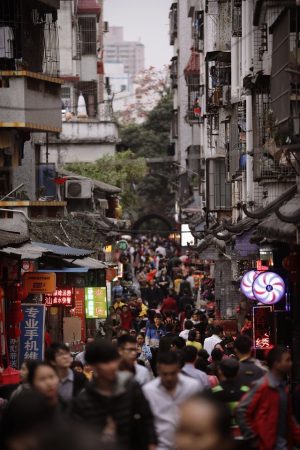Seventh Bi-City Biennale of Urbanism\Architecture (Shenzhen) (UABB)
Cities, Grow in Difference
December 15, 2017–March 15, 2018
With the theme of Cities, Grow in Difference, the Seventh Bi-City Biennale of Urbanism\Architecture (Shenzhen) (UABB) will be jointly curated by curator and critic Hou Hanrou and founding partners of URBANUS Liu Xiaodu and Meng Yan (in alphabetical order). The Biennale will open on December 15, 2017 at its main venue Nantou Old Town, Shenzhen, China, with sub-venues set up in other urban villages around Shenzhen.
As the outcome of collision and fusion between rapid urbanization and the urban-rural dual structure in the planned economic period, urban villages have been preserved as a highly potent urban laboratory and base for breeding alternative lifestyles, where newcomers start to settle in the city. The curatorial team said that they have to redefine and re-consider the exhibition structure and experience in view of the special environment of the urban village. They expect to inspire a more diversified, open-minded understanding and imagination on urban living and evolutionary patterns, thus to critically think about the value of urban life.
Tailored for urban villages, the exhibition’s theme and contents also involve alternative urbanization experience and avant-garde experiment within global context. This year’s UABB will highlight the site-specificity of the exhibition content and, in view of the distinctive spaces in urban villages, start from topics familiar in everyday life to conduct in-depth exploration and reflection on the urban villages. The approach of implanting the exhibition into urban villages and synchronizing with its organic regeneration is to regard urban villages as a starting point to seek a new mode of urban growth instead of a mere subject of renovation. The urban villages and globally distinctive alternative practices will be juxtaposition with the interaction between the urban, architecture, art and culture for research and discussion. Meanwhile, the public will be presented with an imaginative yet down-to-earth exhibition venue that mobilizes to the greatest degree the public’s interest and participation in the UABB with features such as public presentations, guided tours, a public education program and villager participation.
Different from other biennales in the world, as a site, the UABB is witness to the most drastic urbanization of the 20th and 21st centuries. From Shenzhen to the Pearl River Delta, cities in themselves are the biggest exhibition venues.
Mobilized by power and capital, China’s city making has gone through a rapid development for over 30 years. The city tends to be homogeneous and generic, and in recent years, urban renewal, in a bid to improve quality of life, has further swept away time-honored historical areas and a hybrid urban life, replacing them with global commercial standards. Faced with this reality, the curatorial team calls for an urban concept of “coexistence.” In other words, it consciously resists the promise of an identical and idealistic future, and instead advocates the view of the city itself as a highly complex eco-system.
Cities, Grow in Difference means the hybrid growth of culture, society and space. Shenzhen is the conjunctive symbiosis of top-down rational planning and bottom-up spontaneous growth, which urban villages reflects in terms of city and village, reality and history, order and chaos, as well as mobility and creativity. Nantou Old Town, as the main biennale venue, is the heterogeneous symbiosis of a historical town and contemporary urban village. Cities, Grow in Difference carries the creativity, energy and passion of a future generation. Breaking away from standards and codes, free minds and vigorous, creative souls need to find new habitats in the city.
2017 UABB is a platform for finding new theories, new experiments and new practices. It is a communication platform focusing on “discovering” instead of showcasing what has been accomplished. It is a constantly growing exhibition.


